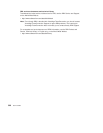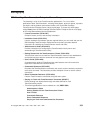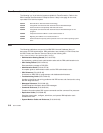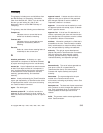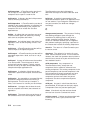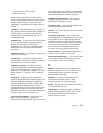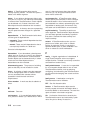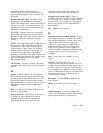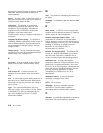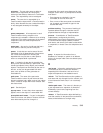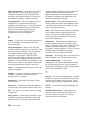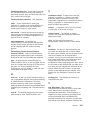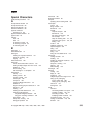defect. A TeamConnection object used to
formally report a problem. The user who opens a
defect is the defect originator.
delete. If you delete a development object, such
as a part or a user ID, any reference to that object
is removed from TeamConnection. Certain objects
can be deleted only if certain criteria are met.
Most objects that are deleted can be re-created.
delta part tree. A directory structure representing
only the parts that were changed in a specified
place.
dependencies. In TeamConnection builds there
are two types of dependencies:
v automatic. These are build dependencies that
a parser identifies.
v manual. These are build dependencies that a
user explicitly identifies in a build tree.
See also
build dependent
.
descendant. If you descendant a development
object, such as, a part or a user ID, any reference
to that object is removed from TeamConnection.
Certain objects can be descendant only if certain
criteria are met. Most objects that are
descendants can be re-created.
disconnecting parts. The process of unlinking
parts so that they are not included in a build.
driver. A collection of work areas that represent
a set of changed parts within a release. Drivers
are only associated with releases whose
processes include the track and driver
subprocesses.
driver member. A work area that is added to a
driver.
E
end user. See
user
.
environment. (1) A user-defined testing domain
for a particular release. (2) A defect field, in which
case it is the environment where the problem
occurred. (3) The string that matches a build
server with a build event.
environment list. A TeamConnection object
used to specify environments in which a release
should be tested. A list of environment-user ID
pairs attached to a release, representing the user
responsible for testing each environment. Only
one tester can be identified for an environment.
explicit authority. The ability to perform an
action against a TeamConnection object because
you have been granted the authority to perform
that action. Contrast with
base authority
and
implicit authority
.
extract. A TeamConnection action you can
perform on a builder, part, driver or release
builder. An extraction results in copying the
specified builder, part, or parts contained in the
driver or release to a client workstation.
F
family. A logical organization of related data. A
single TeamConnection server can support
multiple families. The data in one family cannot be
accessed from another family.
family administrator. A user who is responsible
for all nonsystem-related tasks for one or more
TeamConnection families, such as planning,
configuring, and maintaining the TeamConnection
environment and managing user access to those
families.
family server. A workstation running the
TeamConnection server software.
FAT. See
file allocation table
.
feature. A TeamConnection object used to
formally request and record information about a
functional addition or enhancement. The user who
opens a feature is the feature originator.
file. A collection of data that is stored by the
TeamConnection server and retrieved by a path
name. Any text or binary file used in a
316 User’s Guide



